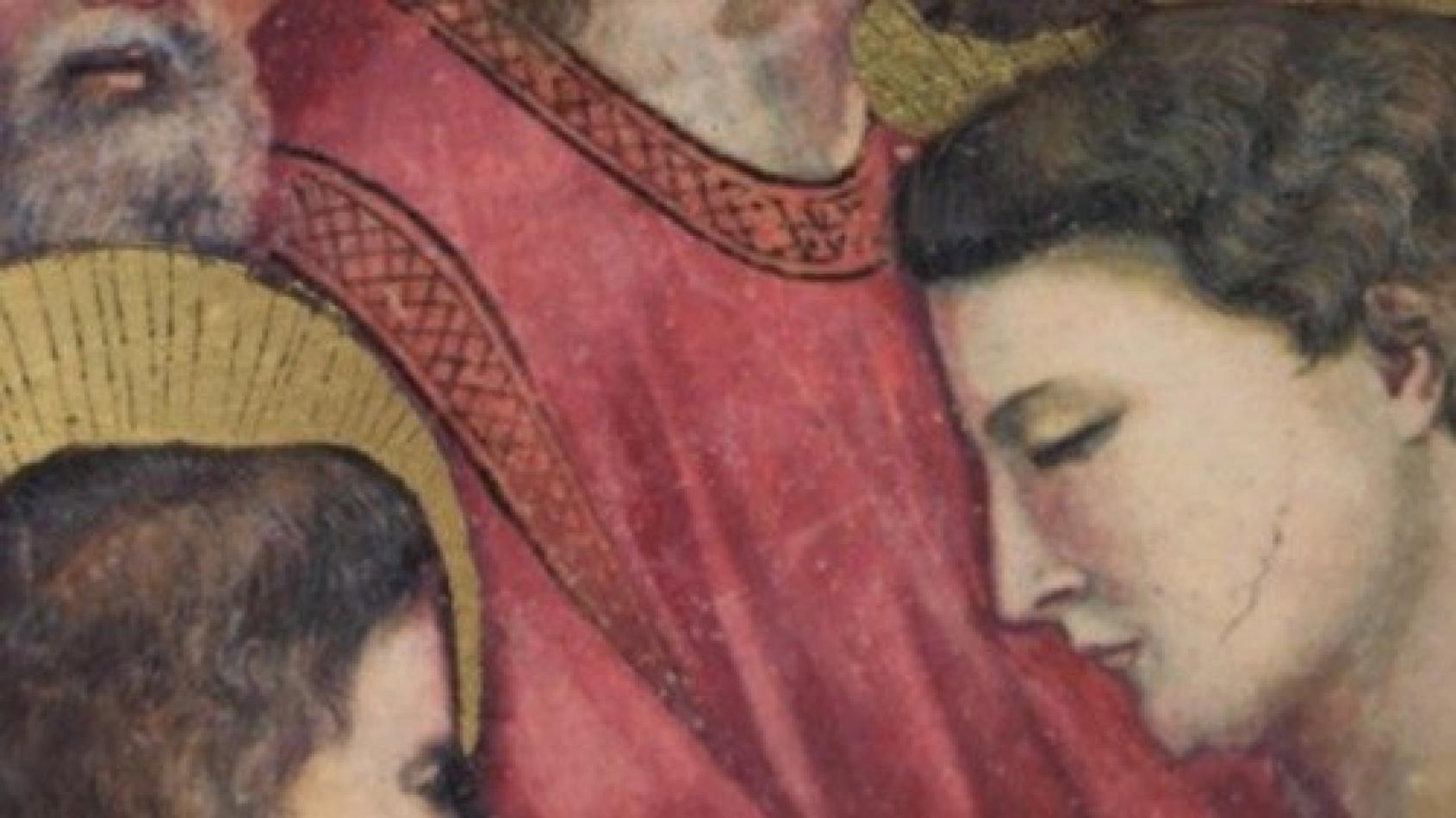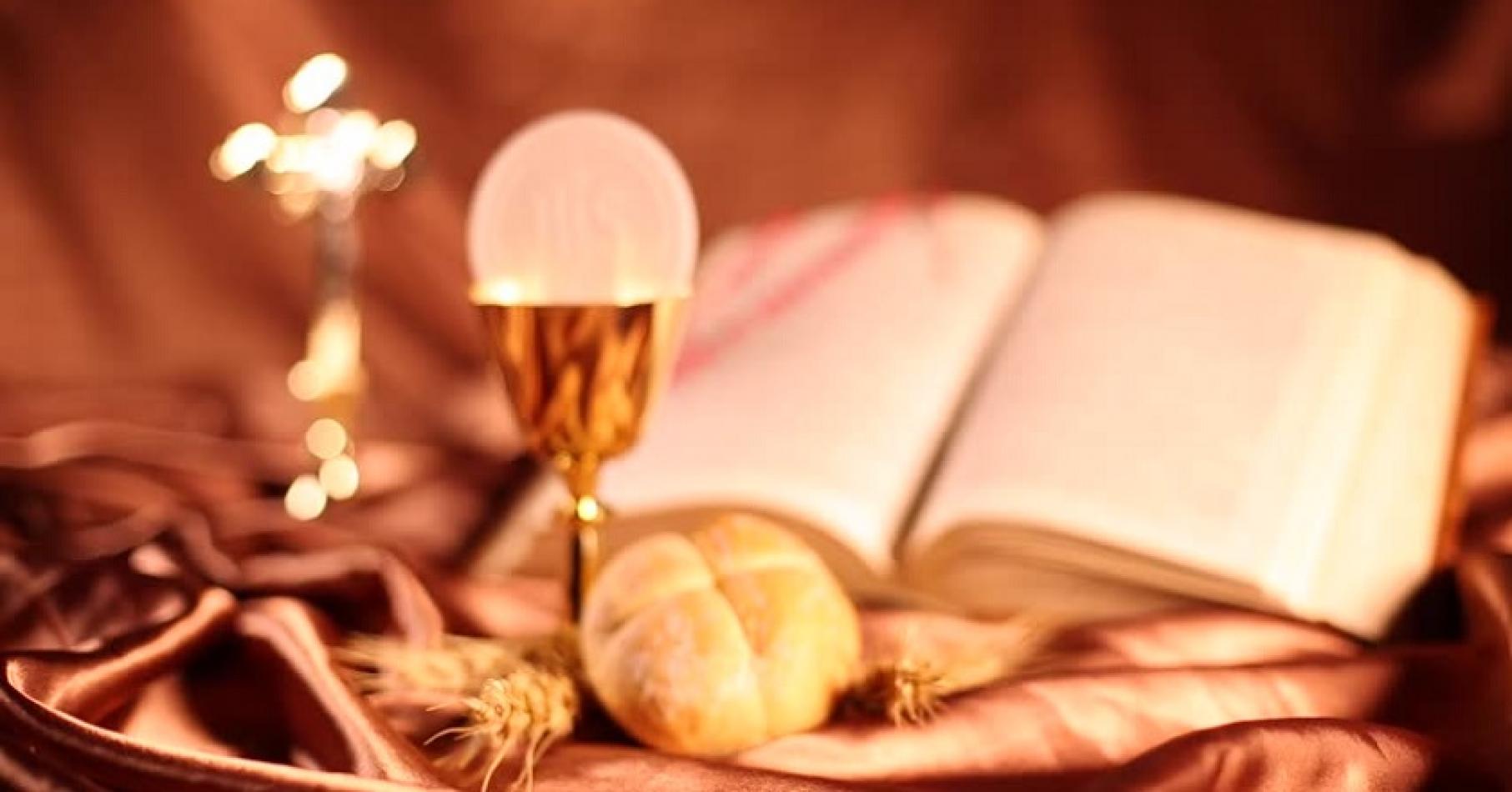Daniel Comboni
Comboni Missionaries
Institutional area
Other links
Newsletter
We have reached the last Sunday of Advent. The Lord's Christmas is near and the anticipation of His coming grows in the heart of every Christian. The entrance antiphon of the Eucharist proclaims: "Let the heavens drop down dew from above, and let the clouds rain down the Just One; let the earth open and bring forth the Savior" (cf. Is 45:8). Our gaze turns to Heaven, awaiting God's gift, and at the same time to the earth, fertilized by Heaven, to recognize the signs of the "shoot that springs from the stump of Jesse" (Isaiah 11:1). [...]
The Visitation and the Culture of Encounter
"Mary arose and went with haste..."
Luke 1:39-45
We have reached the last Sunday of Advent. The Lord's Christmas is near and the anticipation of His coming grows in the heart of every Christian. The entrance antiphon of the Eucharist proclaims: "Let the heavens drop down dew from above, and let the clouds rain down the Just One; let the earth open and bring forth the Savior" (cf. Is 45:8). Our gaze turns to Heaven, awaiting God's gift, and at the same time to the earth, fertilized by Heaven, to recognize the signs of the "shoot that springs from the stump of Jesse" (Isaiah 11:1).
Mary is the central figure of the fourth Sunday of Advent. The Gospel recounts the episode of the Visitation. After learning from the angel that her relative Elizabeth was six months pregnant, Mary "arose and went with haste to the hill country, to a town in Judah." Tradition identifies this town as Ain Karim, about 130 kilometers from Nazareth.
What prompted Mary to "arise and go with haste" to Elizabeth? Usually, we say that she wanted to assist her elderly relative. Or perhaps she wished to share the joy of Elizabeth’s pregnancy, she who "was called barren" (Lk 1:36). It is also likely that Mary felt the need to confide in Elizabeth about the mystery of her maternity. Who, better than Elizabeth, could understand her?
However, Saint Luke's intention goes beyond these considerations. He recalls the transfer of the Ark of the Covenant to Jerusalem (cf. 2 Samuel 6 and 1 Chronicles 16). Mary is presented as the Ark of the New Covenant, the living Tabernacle carrying the Son of God in her womb.
The scene of the Visitation also evokes a small "Pentecost." Indeed, "when Elizabeth heard Mary’s greeting, the child leaped in her womb" (Lk 1:41). At that moment, the angel's promise to Zechariah is fulfilled: John "will be filled with the Holy Spirit, even from his mother’s womb" (Lk 1:15).
Moreover, the Holy Spirit, descending upon Elizabeth, offers Mary an unexpected surprise. "Elizabeth was filled with the Holy Spirit and exclaimed with a loud cry, 'Blessed are you among women, and blessed is the fruit of your womb!'" (Lk 1:41-42). Even before Mary says anything to Elizabeth, it is Elizabeth, moved by the Holy Spirit, who confirms the mystery taking place in her. In response to this revelation, Mary bursts into joy, gratitude, and praise in the Magnificat.
Reflections
The story of the Visitation is a treasure chest rich in messages to gather and meditate upon. Here are three points to consider.
The Visitation, an Icon of Encounter
Relationships with others are an essential dimension of human life. The meeting between these two women, one young and one elderly, reveals the beauty of every authentic encounter, open to friendship and sharing. Between Mary and Elizabeth, there is a communion embrace between the New and the First Covenant. It is a fruitful meeting, in which both women are enriched.
Today, we lack a true culture of encounter. Unfortunately, confrontation often prevails, where the other is demonized. The Christian contemplates, in these two women, their vocation to go out and meet others with an attitude of openness and empathy. Blessed by God, we are carriers of blessing. If we carry the Spirit in our hearts, even a simple greeting or smile are not trivial gestures.
Mary Pregnant, an Icon of the Church and the Christian
The "pregnant woman, crying out in labor pains" mentioned in Revelation (chapter 12) is a representation of Mary, an image of the Church, and, in a certain sense, of the Christian as well. Origen of Alexandria, who lived in the 3rd century, uses this extraordinarily intense image to describe the Christian's vocation: that of a pregnant woman.
"The Christian passes through the world pregnant with God, ferens Verbum (Origen), carrying another life within their life, learning to breathe with the breath of God, to feel with the feelings of Christ, as if they had two hearts: their own and another with a stronger beat that will never cease. Even now, God seeks mothers to become incarnate" (Ermes Ronchi).
But are we truly "pregnant with Christ" through listening to His Word? Could we experience what Isaiah describes: "We have conceived, we have felt pain as if giving birth: it was only wind; we have brought no salvation to the earth, and no inhabitants have been born in the world" (Isaiah 26:18).
The Visitation, an Icon of Mission
Finally, the Visitation can represent an eloquent icon of mission. The missionary, or the Christian, is not the true precursor of Christ in the places or fields where they are sent to evangelize. The true precursor is the Spirit, who has always been at work in the heart of every person, culture, and people. Mission is not only about evangelizing but also about allowing oneself to be evangelized through encounters with others.
Christian De Chergé, prior of the Abbey of Tibhirine, killed along with six other Trappist monks in Algeria in May 1996, expressed this idea incisively. In 1977, he wrote: "In recent times, I have become convinced that the episode of the Visitation is the true theological and scriptural locus of mission, in respect for the other already invested by the Spirit." Thus, we could say that God awaits us in the other!
Like Mary, let us arise and walk quickly toward the Lord who comes!
Fr. Manuel João Pereira Correia, mccj
Luke 1, 39-45
The Gospel for this Sunday of Advent highlights the figure of Mary. We see her when, just after having conceived in faith the Son of God, she makes the long trip from Nazareth, in Galilee, to the hill country of Judah, to visit and help her cousin Elizabeth. The Angel Gabriel had revealed to her that her elderly relative, who did not have children, was in her sixth month of pregnancy (cf. Lk 1:26-36). That’s why Our Lady, who carried within her a gift and an even greater mystery, goes to see Elizabeth and stays with her for three months. In the meeting between these two women — one old and the other young — it is the young one, Mary, who offers the first greeting. The Gospel says: “she entered the house of Zechariah and greeted Elizabeth” (Lk 1:40). After this greeting, Elizabeth feels enveloped in great astonishment — don’t forget this word, astonishment. Astonishment. Elizabeth feels enveloped in great astonishment which is echoed in these words: “And why is this granted me, that the mother of my Lord should come to me?” (v. 43). And they embrace and kiss each other, joyfully, these two women. The elderly woman and the young one, both pregnant.
To celebrate Christmas in a fruitful manner, we are called to pause in “places” of astonishment. And what are these places of astonishment in everyday life? There are three. The first place is the other, in whom we recognize a brother or sister, because since the birth of Jesus occurred, every face is marked with a semblance to the Son of God. Above all when it is the face of the poor, because God entered the world poor, and it was to the poor, in the first place, that he allowed himself to draw near.
Another place of astonishment — the second place in which, if we look with faith, we actually feel astonishment, is history. So many times we think we see it the right way, and instead we risk reading it backwards. It happens, for example, when history seems to us to be determined by the market economy, regulated by finance and business, dominated by the powers that be. The God of Christmas is instead a God who “shuffles the cards” — he likes doing so! As Mary sings in the Magnificat, it is the Lord who puts down the mighty from their thrones and exalts those of low degree, who fills the hungry with good things and sends the rich away empty (cf. Lk 1:52-53). This is the second type of astonishment, astonishment in history.
The third place of astonishment is the Church. To look on her with the astonishment of faith means not limiting oneself to consider her only as a religious institution, which she is, but to feel her as a mother who, despite her blemishes and wrinkles — we have so many of them! — allows the features of the beloved bride purified by Christ the Lord to shine through. A Church that is able to recognize the many signs of faithful love that God continuously sends her. A Church for which the Lord Jesus will never be a possession to be jealously protected; those who do this err. The Lord Jesus will always be the One who comes to meet her and whom she knows how to await with trust and joy, giving voice to the hope of the world. The Church that calls to the Lord, “Come Lord Jesus”. The Mother Church that always has her doors open wide, and her arms open to welcome everyone. Moreover, Mother Church goes out from her own doors to seek with a mother’s smile all those who are far and bring them to the mercy of God. This is the astonishment of Christmas.
At Christmas, God gives us all of himself by giving his Only Son, who is all his joy. It is only with the heart of Mary, the humble and poor daughter of Zion, who became the Mother of the Son of the Most High, that it is possible to rejoice and be glad for the great gift of God and for his unpredictable surprise. May she help us to perceive the astonishment — these three wonders: the other, history and the Church — through the birth of Jesus, the gift of gifts, the undeserved gift who brings us salvation. The encounter with Jesus will enable us too to feel this great astonishment. We cannot have this astonishment, however, we cannot encounter Jesus, if we do not encounter him in others, in history and in the Church.
Angelus, 20.12.2015




